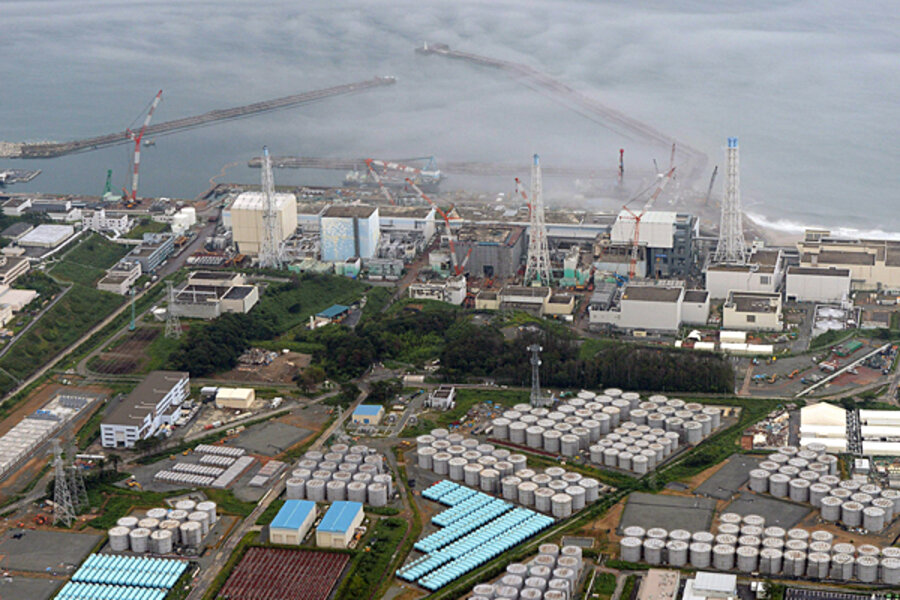New Fukushima radioactive leak 'serious'
Loading...
Japan’s watchdog Nuclear Regulation Authority announced Wednesday that a radioactive water leak at the crippled Fukushima Daiichi Nuclear power plant was magnitudes more severe than previously thought, further eroding faith in the capacity of the plant owners and government to deal with safety breaches in the aftermath of a disaster there two years ago.
The NRA increased the severity level of the crisis – which began when a leak was discovered in a storage tank Monday – from a level 1 “anomaly” to a level 3 “serious incident” on the International Nuclear and Radiological Event Scale. Each number on the scale represents a 10-fold increase in severity, with a level 3 event signaling exposure that exceeds ten times the limit for workers, according to the UN's International Atomic Energy Agency.
"I don't know if describing it this way is appropriate, but [Fukushima] is like a haunted house and, as I've said, mishaps keep happening one after the other," NRA Chairman Shunichi Tanaka said to reporters, according to Reuters. "We have to look into how we can reduce the risks and how to prevent it from becoming a fatal or serious incident."
The announcement came as workers at the plant frantically hauled sandbags to the site of the leak to stem the flow of contaminated water. But Tokyo Electric Power, or Tepco, which runs the hobbled plant, acknowledged to The New York Times that much of the leaked water had already found its way into the surrounding soil, and could eventually reach the ocean.
This is the latest in a series of major crises that have befallen Fukushima since March 2011, when an earthquake and tsunami caused a nuclear meltdown at the plant – the worst disaster of its kind since the 1986 incident at Chernobyl.
Last month, the NRA declared an emergency at the plant after it was discovered that hundreds of tons of radioactive groundwater were leaking into the ocean from the plant each day. And last week, the plant announced that 10 workers had been unwittingly sprayed with a mist – used to cool parts of the building – that had high levels of radiation.
Tepco has been repeatedly criticized for its bungled handling of these crises, and many observers worry the latest leak is a harbinger of further disasters to come. As the Times reports,
Tepco had assumed the tanks would last at least five years. But the tank that leaked could have been in place no more than two, and workers previously found smaller leaks from similar tanks at least four times. And Hiroshi Miyano, an expert in nuclear system design at Hosei University in Tokyo, said that the tanks would be vulnerable to earthquake or tsunami, with the potential for a huge spill.
Meanwhile, the company has not yet identified the precise source of Monday’s leak, which was uncovered when workers found large puddles near a 1,000 ton tank. By the time they identified the problem, some 300 tons of water had already spilled out.
As Fox News reports, the spill will contribute to a cleanup effort that is already projected to take decades, and that has left the area around the plant devastated.
The Japanese government recently allowed international media to travel inside the uninhabited zone around the plant, on the nation's northeastern coast. Villages appear frozen in time, deserted, with everything left as it was when residents were evacuated. The crippled nuclear plant, whose reactors have still not cooled, is situated on a hill overlooking what were once beautiful beaches now littered with vehicles and debris from the tsunami.
Former residents are allowed to visit sometimes their former homes, but can't stay long and face a vigorous radiation checking procedure every time they leave. The sea, was once famous across Japan for the fish it provided, is bereft of fishing boats.
Recent tests of water from wells in the area show that radioactivity is still hundreds of times above safe drinking levels.








